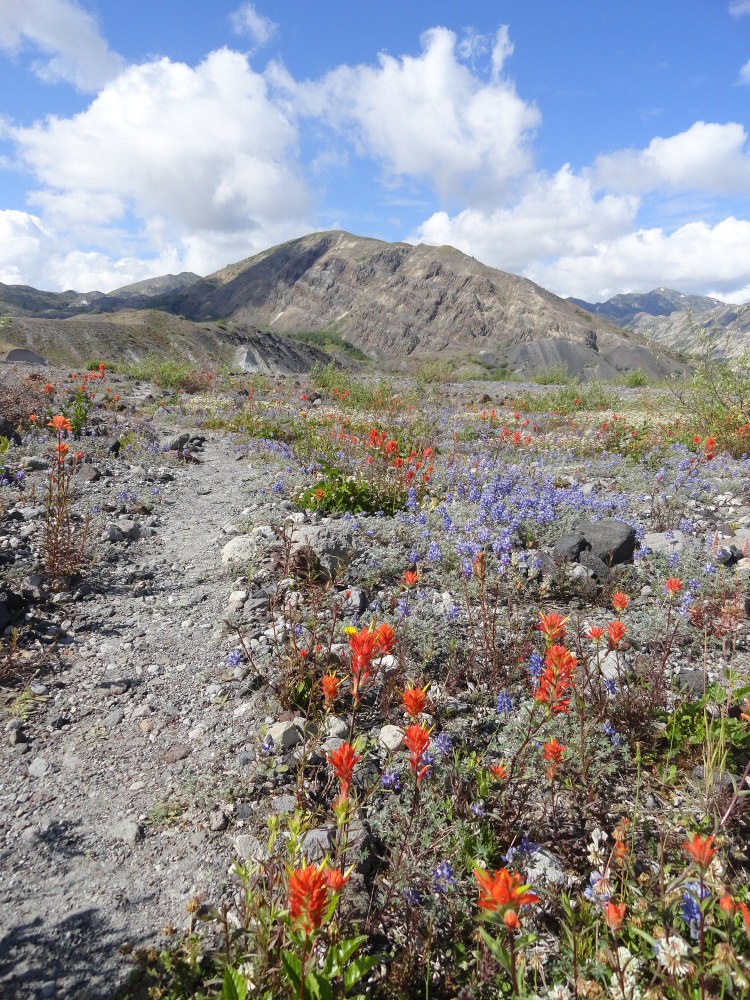
May 18, 1980.
Locals are unlikely to forget the day Mount St. Helens dropped from standing 9,677 feet tall to 8,366 feet. Ash seemed to cover everything for miles around. When the ash cleared, however, Mount St. Helens National Volcanic Monument was established and it has since become a fascinating place to explore.
Thirty-five years after its dramatic eruption, Mt. St. Helen’s still draws us to it. And now, guidebook author Craig Romano and Aaron Theisen have joined forces to help you uncover the Monument’s most intriguing features in our new release Day Hiking: Mount St. Helens.
If you have never been to Mount St. Helens, we invite you to visit it this summer. Or, if you’ve been here many times before, you know all too well that your next visit will reveal a changing landscape.
Their new guidebook is organized according to the mountain's aspects-east side, west side, south side, or north side, with all the details you need in one handy place. Here’s one hike idea from each aspect:
FROM THE NORTH – Goat Mountain and Deadmans Lake
Hike along a lofty ridge at the demarcation of the blast zone. Look south at blown-down and toppled forests and a series of sparkling alpine lakes surrounded by silver snags. Look north at alpine meadows flush with wildflowers and hillsides cloaked in verdant old-growth canopies. One of the best trails for comparing before and after the eruption landscapes, Goat Mountain is also one of the best for views.
FROM THE SOUTH – Sheep Canyon
Hike along and above dramatic canyons scoured deep by lahars from the 1980 eruption. Savor stupendous volcanic views and marvel at a mosaic of majestic alpine wildflowers. Pass a small mudslide-formed emerald pool and wander through some of the oldest trees in the Monument. This lollipop loop at the edge of the blast zone abounds with surprises.
FROM THE EAST – Strawberry Mountain
One of the finest ridge hikes within the shadows of Mount St. Helens; the only thing sweeter than Strawberry Mountain’s views are its succulent huckleberries. Roam across this elongated peak through berry patches, silver forests, old-growth groves, wildflower meadows, and pumiced slopes—all while marveling at sweeping views encompassing Mount St. Helens, Mount Rainier, and the Goat Rocks.
FROM THE WEST – Truman Trail- Pumice Plain
Hike across the lonely Pumic Plain deep into the heart of the blast zone. Once desolate, the plain now teems with wildflowers, willows, and other flourishing flora and birds and mammals, too. Cross creeks and hummock, skirt wetland pools, enjoying unique views of Spirit Lake and Mount St. Helen’s growing and smoldering crater dome.
And, these are just four of the 80 great hikes you’ll find in our new guidebook. Day Hiking Mount St. Helens offers hikes ranging from easy interpretative trails of less than a mile to challenging 15-mile workouts—and even a few backpacking trips. Because Mount St. Helens has beauty to offer year-round, you’ll also find a handful of snowshoe and cross-country ski adventures, and, two summit routes. What are you waiting for?
*CLICK HERE to download sample hikes from Day Hiking Mount St. Helens*
 Webster Chang
Webster Chang
